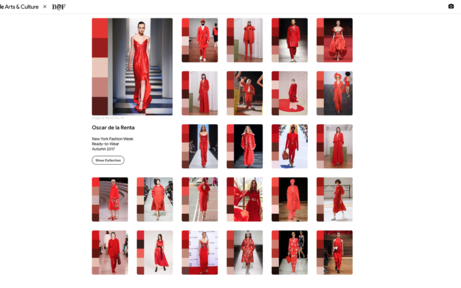
I didn’t dream it all up it came step by step. The Art Newspaper: What is the Google mission?Īmit Sood: The mission is to make information accessible and organise it efficiently, and the way I pitched it at that time to Eric Schmidt was to say, “Do you believe the world of culture is organised?” And he said, “No, I don’t.” I said, “Do you think it’s accessible, then?” And he said, “Well, no, not really.” So he was one of the people who thought, this needs to be a proper mission we need to carve it out as a non-profit team, with its own independence, its own charter, so to speak.
X degrees of separation archive#
Then he discovered other teams in Google doing archive scanning-for example, with Yad Vashem Museum in Israel-and he realised that there were a lot of people who were passionate about culture and about finding a way for digital to embrace it, “so we proposed it to the senior management, and it fitted very well with the mission”.ġ910 From the collection of 1940 From the collection of Betty Fuerst Chalkware Rooster National Gallery of Art Oslo The Munch Museum The Scream Washington DC to Edvard Munch X Degrees of Separation The hidden paths through culture By Mario Klingemann & Simon Doury I want an experience, and when I have time to come to New York, I’ll go and see the original,” Sood said.

“I want a magnificent version, and I want your curator telling me the story. He said he loved their museums after discovering that they were not just for posh people, but why didn’t they all open up a bit? He’d like to look at MoMA’s Starry Night (1889) by Van Gogh at home while drinking a glass of wine, but not with a low-quality thumbnail on Google Images.
X degrees of separation software#
Sood, then working as a software engineer, put an idea to Nicholas Serota, then director of the Tate, Thomas Campbell, then director of the Metropolitan Museum, and Glenn Lowry, the director of New York’s Museum of Modern Art (MoMA). It all started because Google employees are expected to use 20% of their time thinking about new projects that will benefit the company. Behind them are the 500 million monthly art-related searches on Google itself, and its team is working on making that experience better for them, too. Google Arts & Culture is more than a mere recorder of art collections and is now a major producer of cultural content with a huge reach through social media, the app (which has had over one million installs) and with 50 million people using the Arts & Culture website. Its latest, We Wear Culture, unites the collections of 185 museums to tell the story of fashion.
X degrees of separation free#
Among the thousands of topics they have tackled are the Guggenheim Bilbao (this includes a film in which a free runner leaps from girder to girder and turns air somersaults in the Richard Serra sculptures), an explanation of contemporary art and women who changed India’s history. The stories are becoming increasingly elaborate, some of them mini-documentaries, with video, music, presenters and texts. These are presented institution by institution, exhibition by exhibition (6,000 of them), or in “stories”, worked on by Google and its partnering institutions. Museums can also upload their own images, and six million photos, videos, manuscripts and other documents of art, culture and history-including hundreds of thousands of hi-res images of works of art-are now on the platform. The Google Art Camera takes images in such high resolution that you can see the brushstrokes of a painting or the tiniest intricacy of an embroidery it gives the closest one can get to the “hands-on” experience of a work of art without actually touching it. They now partner with 1,500 museums and cultural institutions in 70 countries.

It purposely avoids defining culture-in 2016 it added natural history to its spread-but it does not do popular culture “because plenty of others do that”, Sood says. This is the left field of Google Arts & Culture, the not-for-profit segment of Google founded in 2011 as part of the Google Cultural Institute to digitise the works of art in museums. It is a product of their Experiments section, where they bring artists who are currently at the cutting edge of technology and connect them to their database of images and their partner museums so that they can collaborate. It is X Degrees of Separation, by the artists Mario Klingemann and Simon Doury, which uses computer vision algorithms to make random connections between any two works of art, like a game of Exquisite Corpse to the power of a hundred. Amit Sood, the Bombay-born director of Google’s Cultural Institute and Art Project, is showing me a computer programme that would have made the Surrealists cry with joy.


 0 kommentar(er)
0 kommentar(er)
